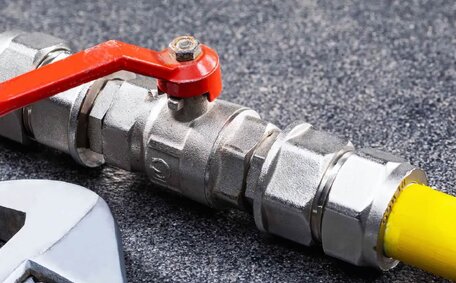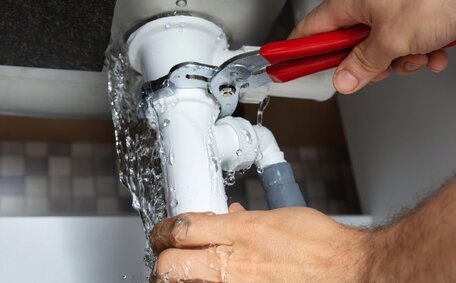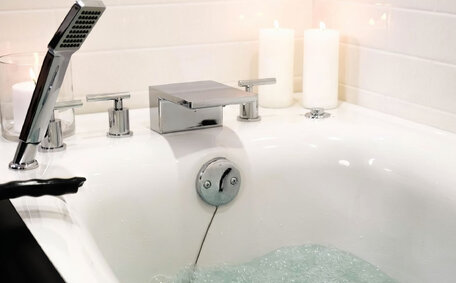Introduction to Common Toilet Noises
The foghorn noise from toilets is perplexing and a nuisance for Mosman residents.
Noise after flushing often signals underlying plumbing issues. In coastal areas like Mosman, salt air and hard water can accelerate wear on toilet components. It’s wise to comprehend these noises and their causes prior to seeking professional plumbing services.
Fortunately, many problematic toilet noises correspond to easily remediable issues, such as a hissing sound suggesting a fill valve adjustment. Gurgling can also be caused due to an obstructed waste line or a malfunctioning float switch.
Addressing these noises promptly through repairs can help prevent recurrent issues with your toilet’s fill mechanism.
This article outlines the most frequent toilet sounds, their causes and steps to silence the noises yourself. This article outlines the most frequent toilet sounds, their causes and steps to silence the noises yourself. Our skilled plumbers excel at identifying and rectifying issues indicated by various toilet sounds.
We offer guidance on flapper adjustments, float arm manipulation, and water pressure management to tackle flushing-related concerns.
Identifying the Source of Your Toilet Noise
Determining the noise source when flushing the toilet assists in diagnosing issues. Start by listening carefully to identify symptoms, such as making noise when the toilet flushes, that suggest problems with various toilet components:
- Toilet fill valve - The fill valve, far from a trivial component, regulates the flow of water into the tank. A whistling sound during refilling could suggest issues with the fill valve controlling water into your toilet bowl, which might need replacing.
- Flapper - The rubber flapper creates a seal at the bottom of the tank. Inadequate sealing by the flapper can lead to gurgling, which makes noise after water trickles into the bowl.
- Float and Float Arm - The float valve and attached arm regulate water levels in the tank. If the float is set too high, this can cause water to gurgle into the toilet bowl and into overflow through the overflow tube.
- Handle and Lift Chain - A loose chain connecting to the flapper can create loud clatters inside your toilet tank.
- Refill Tube - If the refill tube is misaligned, water may spray outside the overflow tube with a hissing sound.
- Tank - A loose toilet tank lid may produce a rattle or sound after the flush during the tank’s refilling process.
Consider plumbing factors that could cause strange toilet noises. Shutting off the water supply and flushing aids in identifying water flow issues by emptying the cistern. Correctly pinpointing the sound source is key to diagnosing and fixing problems accurately.
Faulty Fill Valves Causing Hissing
If you hear a hissing noise when your toilet refills, a faulty ballcock assembly or fill valve is often the culprit. This compact device, typically known as the ballcock valve, is connected to the water supply and uses a floating ball to regulate water flow into the tank. This scenario could create a continuous hissing as excess water passes into the overflow pipe.
Fill valve seals and springs wear out over time.
To fix a hissing fill valve, try this DIY method by turning off the water supply:
- Shut off the water supply using the angle stop valve connected to the toilet.
- Flush the toilet to drain the water in the tank into the bowl.
- Remove the tank lid and turn water supply line off, then disconnect from the fill valve after the toilet has been flushed.
- Unscrew the lock nut securing fill valve to tank.
- Lift out old fill valve and clean area of any gasket remnants.
- Install the replacement fill valve, reconnect parts and, should difficulties arise, call professional help to turn the water back on correctly.
- As the tank fills, make sure to note if the hissing persists and adjust the float arm accordingly.
If the fill valve replacement doesn’t resolve hissing, the problem could lie with water pressure or vent stack issues. For adept diagnosis, don’t hesitate to call licensed professionals at Mosman Plumbing for identifying causes and crafting solutions.
Flapper Issues Leading to Banging and Ghost Flushing
The flapper, resembling the rubber seal at the base of the tank, uses the main water flow and makes noise as it operates simultaneously with the fill valve toilet mechanism. When you flush toilet, the flapper ascends to permit water flow into the bowl. A worn or faulty flapper that doesn’t create a tight seal can lead to a scenario where does my toilet make noise or experiences 'ghost flushing’ during the flush.
If banging sounds emerge, the reasons behind noisy toilet issues could be due to a loose flapper chain inside the tank. Follow these steps to secure it:
- Remove tank lid and set aside.
- Locate chain connecting flush lever to flapper.
- Disconnect chain from flapper lift arm.
- Pull chain to remove slack then reconnect.
- Test flush to ensure banging sound stops.
Water running into the bowl without user action, known as 'ghost flushing’, is usually caused by a leaky flapper. Another common toilet issue is when water gradually flows from tank to bowl without actuating the flush lever. Alter the curve in the lift arm ensuring the toilet flapper forms a snug seal – a small tweak the toilet can benefit from.
Listen for gurgling bubbling sounds when flushed to accurately diagnose the issue. Replace the flapper seal following manufacturer instructions.
For additional help stopping a noisy toilet, contact Mosman Plumbing. Our technicians can replace flapper seals, install a water hammer arrestor, or swap out entire flush valve assemblies. We ensure no leaks or banging sounds persist, as would be the case without a functioning hammer arrestor, after servicing.
Water Hammer Causing Banging Sounds
If you’re wondering why my toilet generates a particularly loud noise after a flush, you could be facing water hammer. This phenomenon, a common complaint, can occur within your plumbing system, the reasons behind the water flow halting suddenly during a flushing toilet, engendering a hydraulic shock that results in the pipes shaking and emitting noise. Older plumbing systems are especially susceptible.
To unearth reasons why your toilet makes noise, diagnose by listening closely to isolate the banging timing when toilet flushed. If the loud noise occurs as the flush cycle completes, it’s possible that a faulty valve can be responsible for water hammer. It’s likely to be signalling worn toilet fill valve seals and improper water pressure regulation.
Try this DIY remedy for a toilet squeal often mistaken for water hammer banging:
- Locate and turn off the angle stop valve supplying toilet water.
- Flush to remove the water your tank holds, then remove the lid.
- Adjust the fill valve float arm down about 1 cm to increase refill time by a few seconds in your toilet tank.
- Reopen the water supply and listen for noises as the tank refills after a test flush.
- Repeat adjustments until banging sound stops.
Should the issue persist, you can install water hammer arrestors yourself to absorb hydraulic shock, or give us call for expert help. Or call Mosman Plumbing and we can diagnose and resolve any persistent banging or water hammer issues.
Gurgling Caused by Clogged Pipes
Gurgling reverberations coming your toilet, notably post-flush, often pinpoint a partial obstruction in your pipes. This prevents swift water drainage, causing bubbles, churning sounds, and slower flushes.
Clogs typically arise from accumulations of organic material, minerals, or other articles getting lodged in your water line. Trouble spots include:
- The trapway curve where water and waste remnants may stagnate behind the bowl
- Joints between waste line segments
- Main sewer junction
Before calling a plumber, try these DIY remedies for a clogged toilet:
- Use a plunger to apply forceful plunges to dislodge clogs.
- Flush a few times in quick succession.
- Pour hot water into the bowl to dissolve deposits.
- Use a drain auger snake to hook and extract lodged debris.
If gurgling persists despite these attempts, contact Mosman Plumbing. Our licenced technicians have the tools and expertise to clear even the most stubborn drain obstructions. We inspect waste lines with cameras to pinpoint clogs, then employ high-pressure jetting, mechanical augers, or hydrojetting as needed to restore smooth water flow.
Fixing Noisy Toilet Issues
While some noises like audible turbulence from a toilet may seem complex, they can often be resolved with straightforward DIY solutions and repairs.
Begin by keenly listening to pinpoint the noise’s origin and the timing of the sounds. Hissing during refilling indicates a faulty fill valve, while banging from the tank can signal a loose flapper chain. Gurgling after flushing points to a partial clog in waste lines.
Common noises can usually be subdued with quick fixes such as:
- Adjusting or replacing fill valve
- Get rid of excess slack in the flapper lift chain
- Snaking drains to clear obstructions
- Installing water hammer arrestors
Prevent future toilet noises, which are likely because of normal wear and tear, with these tips:
- Every 6 months, inspect tank parts and connections
- Ensure proper water pressure to all fixtures
- Update old galvanised plumbing before it can become a major issue, ensuring pipes are upgraded to PEX or copper
Discover our range of plumbing services designed to quiet disruptive sounds in your home, by contacting Mosman Plumbing. Our experienced technicians diagnose issues and perform repairs for tranquil operation.
When to Call a Professional Plumber
Most minor toilet noises can be solved with simple home repairs. However, should DIY solutions fall short, it’s sensible to seek a professional Mosman plumber’s expertise.
Signs it’s time to phone Mosman Plumbing include:
- Persistent noises despite attempts like adjusting fill valves, tightening flapper chains, or clearing drain clogs.
- Sounds are very loud or happen multiple times throughout the day.
- Your home is older and fitted with galvanised pipes, or you’re dealing with low water pressure.
- The toilet malfunctioning beyond making unexpected noises.
- You lack the tools or ability to safely work on the toilet.
Our skilled technicians can accurately identify and resolve issues that may be beyond your capacity to fix yourself.
We service all major brands and handle any issues your plumbing fixtures may present, using specialised tools.






